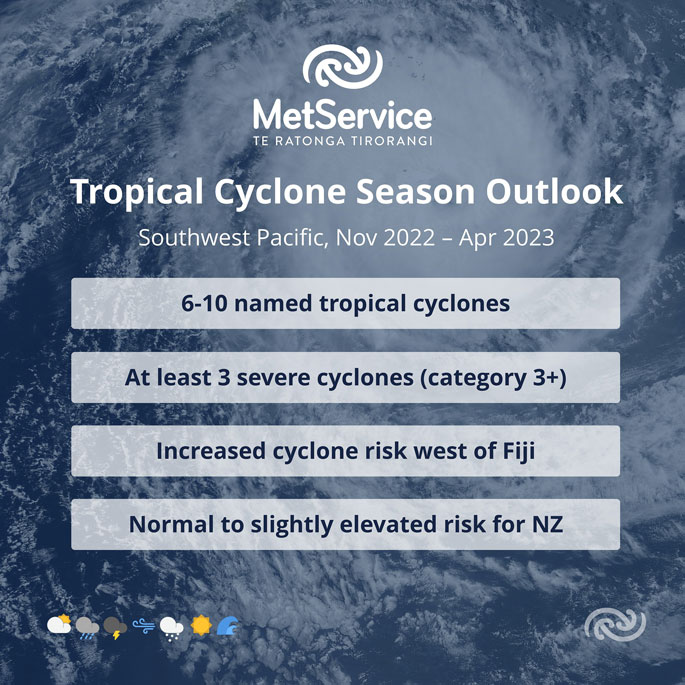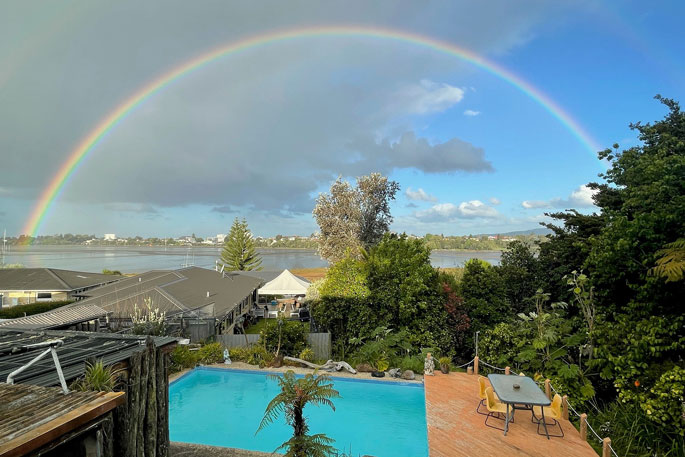Cyclone activity in the coming Tropical Cyclone Season is forecast to be near average, with a range of 6 to 10 named cyclones expected to occur in the Southwest Pacific between November and April.
At least three of these may be severe, reaching category three or higher.
For New Zealand, which is typically affected by one ex-tropical cyclone on average, the risk of impacts from an ex-tropical cyclone is considered near or slightly elevated compared to normal.
Every year MetService, New Zealand's official Tropical Cyclone Warning Centre, works alongside NIWA, Australia's Bureau of Meteorology and national meteorological services from other Pacific nations to produce a Tropical Cyclone Outlook for the coming season.
'The long-term average number of named tropical cyclones in the Southwest Pacific and eastern Australia area is about 10 per season,” says Chris Noble, MetService senior meteorologist and chair of the regional Tropical Cyclone Committee.
'This season, cyclone activity is expected to be about average.”
MetService will begin to issue its daily Tropical Cyclone Potential Bulletin from November 1, or earlier if there is a pre-season development.
The bulletin gives a five-day outlook and will be published on the Tropical Cyclone Activity page of the MetService website.
'This coming season, the El Niño Southern Oscillation (ENSO) cycle is again expected to be in the cool La Niña phase but is likely to weaken and trend towards neutral late in the season
'During La Niña, cyclone activity is more likely in the west of basin, in and around the Coral Sea.
'All communities throughout the South Pacific, including New Zealand, are encouraged to prepare for the coming cyclone season and remain vigilant for developing cyclones or other severe weather.
'It does not take a direct hit or a severe cyclone to cause significant damage or life-threatening weather. If severe weather is forecast, we urge the public to follow official advice from national meteorological services, disaster management offices or local civil defence.”
Around the globe, the official role of monitoring and warning for tropical cyclones is performed by a World Meteorological Organisation (WMO) designated Regional Specialised Meteorological Centre (RSMC) or a Tropical Cyclone Warning Centre (TCWC), depending on the location of the cyclone. TCWC Wellington, based at MetService, has warning responsibility for the area that extends from 160E to 120W between 25S and 40S.
Although it is very rare for a tropical cyclone to form in the TCWC Wellington area of responsibility, intense tropical cyclones do arrive from the neighbouring Australia or Fiji warning areas, and they often retain their named cyclone status until near latitude 30S (just to the north of New Zealand).
Sometimes an ex-tropical cyclone will approach and may even cross New Zealand.
'Memorable examples of ex-tropical cyclones impacting New Zealand include Cyclone Fehi and Gita in 2018, that brought widespread severe weather along with storm surge and coastal inundation to parts of the country, and more recently Dovi and Fili earlier this year.”
If cyclones are expected to impact New Zealand with severe weather, official advice will be provided via Severe Weather Outlooks, Watches and Warnings issued by MetService.
Even if land areas are not affected, warnings are still issued for vessels over the open sea.
For more information on tropical cyclones including category ratings, see the MetService's Tropical Cyclone Monitoring help page.
The full Tropical Cyclone Outlook report is available on NIWA website.
 Image: MetService.
Image: MetService.



0 comments
Leave a Comment
You must be logged in to make a comment.